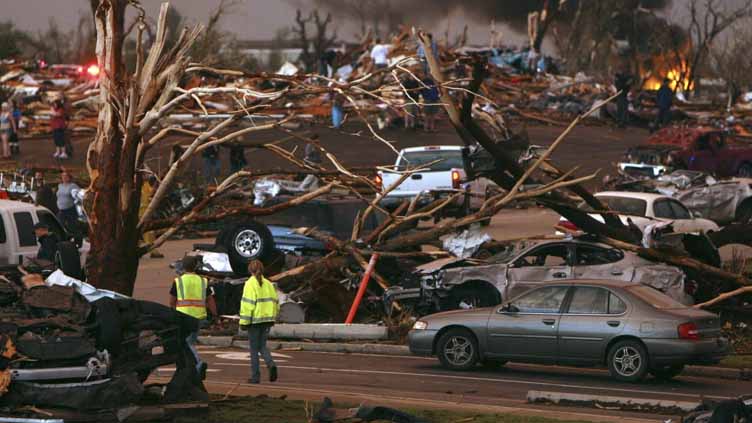Netflix documentary about Missouri tornado revisits one of the deadliest twisters in the US

Entertainment
Flying debris blew out windows and disabled the hospitals’ exposed generators
The horror of the Joplin tornado is the subject of a new documentary film, released nearly 14 years after the twister struck Missouri with cataclysmic force, ripping into a hospital, destroying neighborhoods and killing around 160.
“You see pictures of World War II, the devastation and all that with the bombing,” Kerry Sachetta, then the Joplin High School principal, told The Associated Press on the evening of May 22, 2011, after the school was destroyed.
“That’s really what it looked like,” Sachetta said.
As he spoke on that dreadful night, fires from gas leaks burned across town.
The EF-5 twister, then the single deadliest in six decades, packed winds of 200 mph (320 kph). At times, it was nearly a mile (1.6 kilometers) wide. Left in its wake was a hellscape of cars crushed like soda cans and shaken residents roaming streets in search of missing family members. About 7,500 homes were damaged or destroyed.
“The Twister: Caught in the Storm” was released last week by Netflix following a recent spate of deadly storms that have unleashed tornadoes, blinding dust storms and wildfires.
Hospital became a disaster zone
Some of the most startling damage in Joplin was at St. John’s Regional Medical Center, where staff had only moments to hustle patients into the hallway before the 367-bed hospital was knocked off its foundation.
Flying debris blew out windows and disabled the hospitals’ exposed generators, causing ventilators to stop working. The winds also scattered X-rays and medical records around 75 miles (121 kilometers) away.
Five patients and one visitor died in the immediate aftermath. And other patients later died of injuries they suffered in the storm.
On the morning after the storm, Dr. Jim Riscoe told the AP that some members of his emergency room staff showed up after the tornado with injuries of their own but worked through the night anyway.
“It’s a testimony to the human spirit,” Riscoe said, comparing the scene to a nuclear disaster. “Cars had been thrown like playing cards. Power lines were sparking. I couldn’t believe it.”
The building was so badly damaged it had to be razed the following year.


